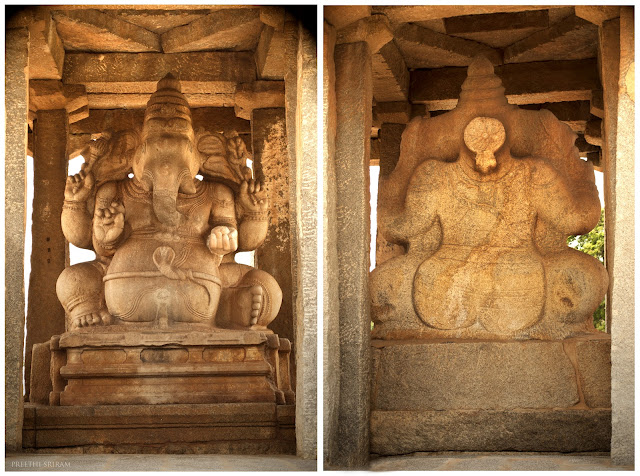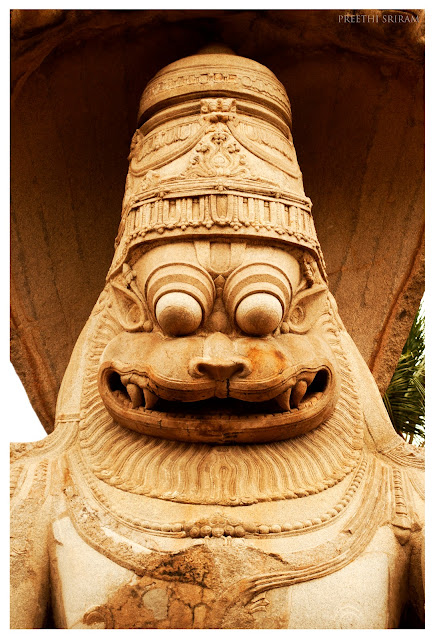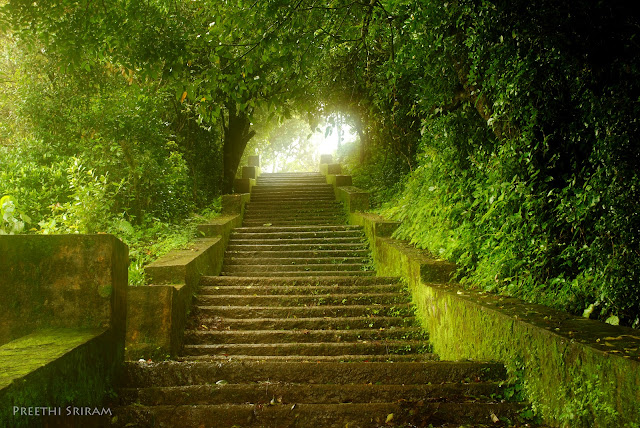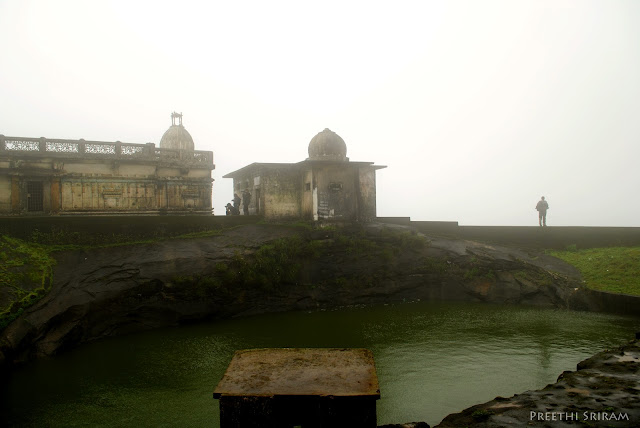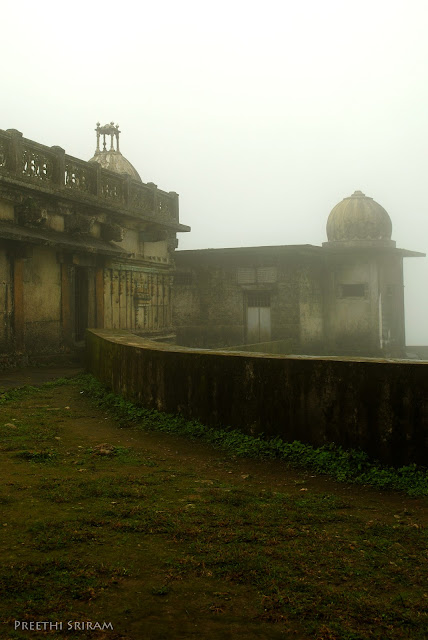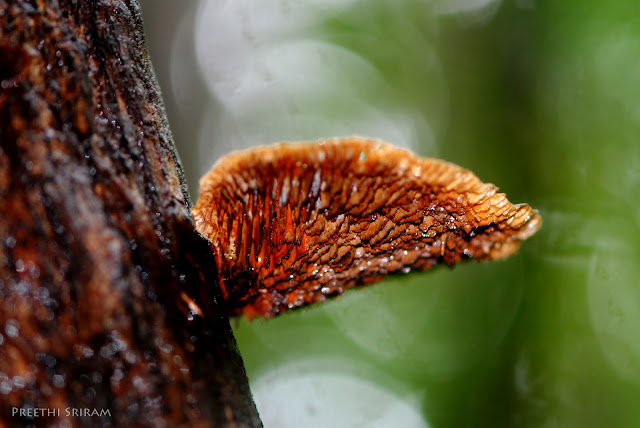Pampakshetra, or now known as Hampi is located near Hospet in Karnataka and is recognised as a World Heritage Centre by the UNESCO.
This charismatically ruined town is a paradise for the backpackers and a delight to the pilgrims.
Surrounded by hills and valleys, Hampi possesses more than 500 monuments. Among them are temples, palaces, market streets, royal pavillions, treasury buildings, aquatic structures, etc.
As an integral
part of the ancient Vijayanagar Empire, it is one of the largest Hindu Empires
in South India.
Hampi is naturally
fortified by the steep Rocky Mountains with massive boulders of granite in
three directions and the mighty Tungabhadra River on the other side. It was
therefore the obvious choice to become the capital of the kingdom. Hampi was
not only chosen for its location but also for its huge raw materials for
building structures.
Much of this
ancient town is now in ruins, after the rulers were defeated at the hands of
the invaders at the battle of Talikota in the 16th century. Most of the marvellous
structures and edifices were systematically destroyed during this war.
The emperors of
this dynasty were great patrons of art and architecture. They built temples and
monuments in various architectural styles. Some of the architectures include a
combination of Chalukya, Hoysala and Dravida style.
We also see a
little bit of Indo-Islamic architecture, but not sure whether this was
constructed during the Vijaynagar ruling era or after the invaders took over.
Sasvekalu Ganesha
This four armed monolithic Ganesha is named Sasvekalu Ganesha merely because it was built by a sasve kalu (mustard seed) trader in 1506 AD and not because of the shape of his belly (as per the assumed myth). In reality it is a Gowri Ganesha, where you can see Ganesha sitting on the lap of his mother Gowri.
Virupaksha Temple
The nine-tiered tower of Virupaksha Temple is about 50m high. The Vijaynagar style of architecture was adopted in the construction of this temple. Commissioned in the early 16th century, it stands as the only unspoilt structure in the middle of the vast ruins and is the only active temple of this ancient city. The presiding deity of this temple is Virupaksha (Lord Shiva), the consort of Goddess Pampa. Hence, this temple is also known as Pampapathi Temple.
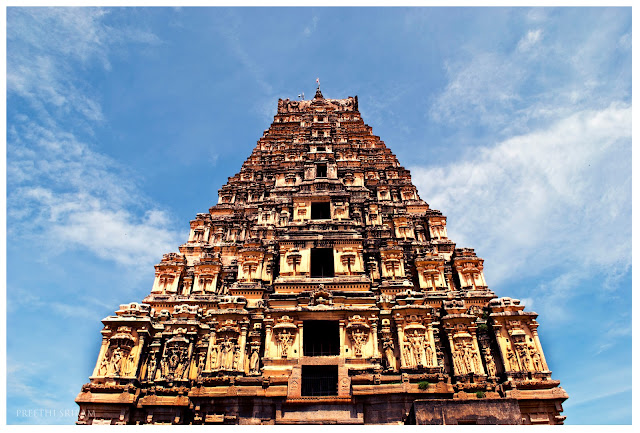 |
| The Gopuram of the Virupaksha Temple |
Zenana Enclosure
The Zenana enclosure built in the Indo-Islamic architecture style, seems to be a secluded area reserved for the royal women to watch the royal ceremonial functions in privacy. This harem houses many interesting structures like the queen's palace, treasury building, guard's quarters, elephant stable and the major attraction - the Lotus Mahal. Being a ladies area, it is believed that eunuch soldiers guarded this enclosure.
Elephant Stable in Zenana Enclosure
Recent opinions also claim this structure to have been the secretariat of Rama Raya.
 |
| Elephant Stable |
 |
| The Elephant Stable at Dusk |
Lotus Mahal in Zenana Enclosure
 |
| Interior of the Lotus Mahal |
The Ancient Aquaduct
This bridge is located enroute to Kishkinda.
The Badavalinga
This is one of the largest monolithic Lingas in South India. The pedestal of this 3mt high Lingam remains permanently submerged as a water channel is made to flow through it. Legend has it that this was commissioned by
a peasant woman and hence the name Badava Linga (Badava means ‘Poor’ in Kannada).
Lakshmi Narasimha Statue
This monolithic statue of Narasimha is found to be sitting in a cross-legged yoga position on the coil of a seven-headed giant snake called Adishesha. The heads of the snake acts as the hood above his head.Because of the sitting position, this statue is referred to as Yoga Narasimha, but the protruding eyes and the facial expression depict the form of Ugra Narasimha (in his terrifying form).
The original statue had the image of Goddess Lakshmi, consort of the Lord,
sitting on his lap. But this statue has been damaged now and the Goddess’s hand
is visible in an embracing posture only when viewed from behind.
Prasanna Virupaksha Temple or The Underground Temple
The Prasanna Virupaksha temple is one of the oldest temples in Hampi and is built many meters below the ground level. The water canal passing through the sanctorum restricts entry to the inner areas.
 |
| Exterior of the Underground Temple |
 |
| The Sacred Sanctorum of Prasanna Virupaksha - The Underground Temple |
Vijay Vittala Temple
This 15th century Vijay Vittala Temple, the abode of lord Vishnu, built in the Dravidian style of architecture is a true representative of human craftsmanship. The main attraction here is the 56 musical pillars or the SaReGaMa Pillars that produce the musical sound when gently tapped. The Stone Chariot - famous icon of Hampi is located in this very temple complex.
 |
| The Famous Chariot of Hampi |
 |
| The Kalyan Mantap at Vijay Vittala Temple |
 |
| The Musical Pillars |
 |
| Vittala Bazaar at Sunset |
Hazara Rama Temple
Located at the heart of the Royal Enclosure, The Hazara Rama Temple is popular for the 'Thousand Ramas' carved on the walls.The story of the Hindu Mythology - Ramayana is depicted on these walls through intricate carvings.
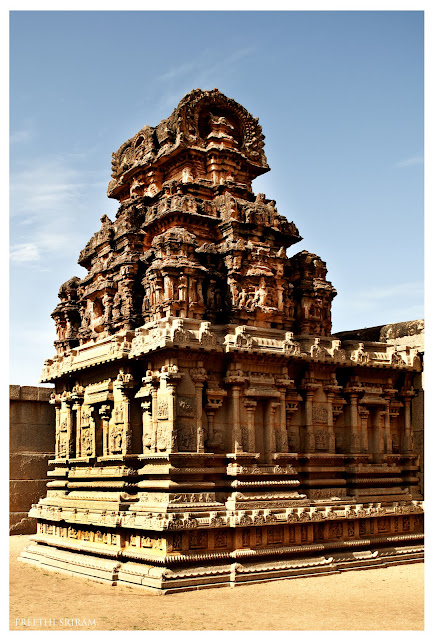 |
| Hazara Rama Temple |
 |
| Thousand Ramas Carved on the Temple Wall |
 |
| The Intricate Carvings at Hazara Rama Temple |
 |
| The Intricate Carvings at Hazara Rama Temple |
The royal enclosure depicts the power of the fallen empire with its vast number of interesting relics such as the Mahanavami Dibba, King’s audience hall, stepped tank, the royal swimming pool, etc.
The magnificence of the Vijaynagar Empire can be visualised through this
royal enclosure which spreads over hundreds of square meters.
 |
| Water Inlet for the Royal Swimming Pool |
 |
| Stepped Tank |
Bala Krishna Temple
The Balakrishna Temple is located at the entrance of this ancient city. This temple was built by King
Krishnadevaraya in the 15th century to celebrate his conquest of the
Udayagiri Kingdom. A huge slab installed inside the courtyard has the story of
this temple and the conquest of Udayagiri inscribed on it. The main deity's (Balakrishna)
idol which was rescued from the ruins is presently displayed at the state
museum in Chennai.
 |
| The Gopuram of the Balakrishna Temple |
 |
| The Pushkarni at the Balakrishna Temple |
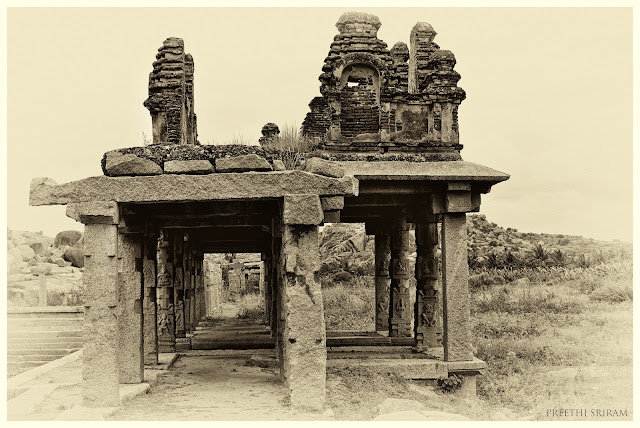 |
| Krishna Bazaar |
Situated on the Himakunta Hill - The Open-Pillared Mandap in front of the 4.5mts high Kadlekalu Ganesha.
The Mighty Tungabadhra
